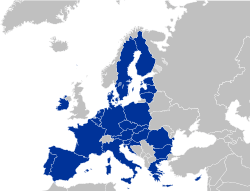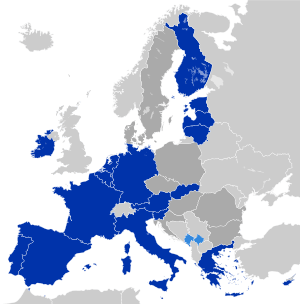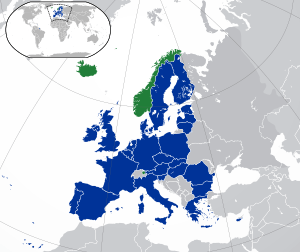Referendums related to the European Union
This is a list of referendums related to the European Union, or referendums related to the European Communities, which were predecessors of the European Union. Since 1972, a total of 48 referendums have been held by EU member states, candidate states, and their territories, with several additional referendums held in countries outside of the EU. The referendums have been held most commonly on the subject of whether to become a member of European Union as part of the accession process, although the EU does not require any candidate country to hold a referendum to approve membership or as part of treaty ratification. Other EU-related referendums have been held on the adoption of the euro and on participation in other EU-related policies.
The United Kingdom is the only EU member state to have held referendums on continued membership of the European Union and its antecedent organisation, the European Communities. In the first referendum in 1975, continued membership of what was then the European Communities (which included the European Economic Community, often referred to as the Common Market in the UK)[nb 1] was approved by 67.2% of voters, while in its second referendum in 2016 voters voted by 51.9% to leave the European Union.[nb 2]
Greenland, an autonomous territory of Denmark, voted to leave the EC in a referendum in 1982 by 53% of voters.
Summary
| Country | Year | Vote (%) | Turnout (%) | Result | ||
|---|---|---|---|---|---|---|
| 1972 |
|
90.1 | Joined | |||
| 1972 |
|
60.2 | Approved | |||
| 1972 |
|
79.0 | No action | |||
| 1972 |
|
70.9 | Joined | |||
| 1975 |
|
64.6 | Remained | |||
| 1982 |
|
- | Left | |||
| 1994 |
|
49.1 | Joined | |||
| 1994 |
|
82.3 | Joined | |||
| 1994 |
|
70.8 | Joined | |||
| 1994 |
|
89.0 | No action | |||
| 1994 |
|
83.3 | Joined | |||
| 1997 |
|
35.4 | No action | |||
| 2001 |
|
55.8 | No action | |||
| 2003 |
|
55.2 | Joined | |||
| 2003 |
|
64.1 | Joined | |||
| 2003 |
|
45.6 | Joined | |||
| 2003 |
|
71.5 | Joined | |||
| 2003 |
|
63.4 | Joined | |||
| 2003 |
|
90.9 | Joined | |||
| 2003 |
|
58.9 | Joined | |||
| 2003 |
|
52.1 | Joined | |||
| 2003 |
|
60.2 | Joined | |||
| 2012 |
|
43.5 | Joined | |||
| 2013 |
|
49.7 | No action | |||
| 2016 |
|
72.2 | Left - currently in a transition period | |||
| 2018 |
|
36.9 | Joining |
EC enlargement of 1973
In 1972, four countries held referendums on the subject of the 1973 enlargement of the European Communities.

- Before allowing the four new candidate member states to join the European Communities, founding member France held a referendum that approved this. Following the French approval, three of the four candidate states (Ireland, Denmark and Norway) likewise held referendums on the issue of joining the European Communities. The United Kingdom did not hold a referendum before joining.


- Following the rejection by the Norwegian electorate, Norway did not join.

Denmark, Ireland, and the United Kingdom were admitted as members of the EC, acceding on 1 January 1973.
United Kingdom's European Communities membership, 1975

- The Conservative government of Edward Heath did not hold a referendum before the United Kingdom joined the European Communities in 1973. The Labour Party's manifesto for the 1974 general election included a pledge for an in-out referendum after a renegotiation of its membership. Accordingly, after Labour won under Harold Wilson, the referendum was held on whether to remain in the Communities after a renegotiation of its membership. The result was in favour of remaining.
Greenland's European Communities membership, 1982
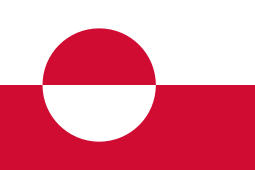
- In 1973, Greenland joined the European communities as part of Denmark. However, after the establishment of home-rule and eurosceptic Siumut winning the 1979 Greenlandic parliamentary election, a referendum on membership was agreed upon, in which the voters rejected remaining part of the communities. This resulted in Greenland negotiating the terms of its separation from the EU, resulting in the Greenland Treaty, and Greenland's leaving the communities in 1985.
Single European Act
Two referendums were held in EU countries to permit them to ratify the Single European Act.


Maastricht Treaty

- Before the negotiations on the treaty of Maastricht began, Italy held a consultative referendum in order to give the European Parliament a popular mandate to elaborate a future European Constitution. After the treaty was signed, three countries held referendums on its ratification.



- In Denmark, two referendums were held before the treaty of Maastricht passed. The first one rejected the treaty.

- After the defeat of the treaty in the first refererendum, Denmark negotiated and received four opt-outs from portions of the treaty: Economic and Monetary Union, Union Citizenship, Justice and Home Affairs, and Common Defence. The second referendum approved the treaty amended with the opt-outs.
EU enlargement of 1995
In 1994, four countries, and one dependency, held referendums on membership of the EU, resulting in the 1995 enlargement of the European Union.



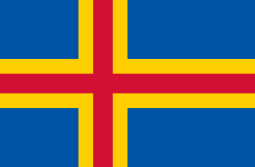
- The Åland Islands, a semi-autonomous dependency of Finland, also voted on their accession to the European Union. The favourable vote meant that EU law would apply also to the Åland Islands.

- For the second time, Norwegian voters rejected the Norwegian government's proposal to join the EU.
Austria, Sweden, and Finland were admitted as members of the EU, acceding on 1 January 1995.
Treaty of Amsterdam, 1998
Two countries held referendums on the ratification of the treaty of Amsterdam.


Treaty of Nice, 2001

- In 2001, Irish voters rejected the Treaty of Nice, in the so-called "Nice I referendum".

- In the so-called "Nice II referendum" in 2002, statements on Ireland not having to join a common defence policy and affirming the right to decide on enhanced cooperation in the national parliament were stressed in a special document, resulting in a favourable vote.
EU enlargement of 2004
The 2004 enlargement of the European Union involved ten candidate states, eight from Central and Eastern Europe, and the Mediterranean islands of Malta and Cyprus. In 2003, referendums on joining the EU were held in all these nations except Cyprus.
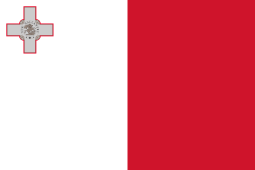








Since the results were in favourable in all cases, all ten candidate countries were admitted as members of the EU, acceding on 1 May 2004.
Euro
Denmark and the United Kingdom received opt-outs from the Maastricht Treaty and do not have to join the euro unless they choose to do so; Sweden has not received an opt-out, yet deliberately does not live up to the requirements for joining for now. Two referendums have been held on the issue up to now, both of which rejected accession.


European Constitution, 2005
Several member states used or intended to use referendums to ratify the Treaty establishing a Constitution for Europe (TCE).




Referendums were planned, but not held, in:






Treaty of Lisbon
Only one member state, Ireland, obliged by their constitution, decided on ratification of the Treaty of Lisbon through a referendum.

- In 2008, Irish voters rejected the Treaty of Lisbon.

- After the first vote by Ireland on the Lisbon Treaty, the European Council and the Irish Government released separate documents, referred to as the "Irish Guarantees", that stated the other member countries would not use the possibility in the Treaty to diminish the number of permanent commissioners in favour of a rotating system with fewer commissioners, and not threaten Ireland's military neutrality and rules on abortion.[1][2] With these assurances, the Irish approved the unchanged Lisbon Treaty in a second referendum.
EU enlargement of 2013

Croatia was admitted as a member of the EU, acceding on 1 July 2013.
European Fiscal Compact, 2012

San Marino membership application
A referendum was held in San Marino on whether the country should submit an application to join the European Union as a full member state.
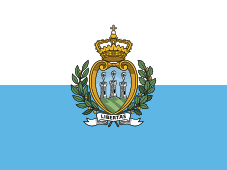
Unified Patent Court
The Unified Patent Court is a proposed court between several EU member states, that, inter alia, is to be constituted for litigation related to the European Union patent.


Greek bailout referendum, 2015

- A referendum on the bailout conditions in the Greek government-debt crisis. A majority of the voters rejected the bailout conditions. However, shortly afterwards the government accepted a bailout with even harsher conditions than the ones rejected by the voters.
Danish EU opt-out referendum, 2015

- The referendum was held to decide on converting the opt-out from participation in the area of Justice and Home Affairs area into an opt-in: the possibility for the Danes to decide on a case-by-case basis. The voters rejected the proposal.
Dutch Ukraine–European Union Association Agreement referendum, 2016

- A consultative referendum upon a request of 427,939 Dutch citizens, based on the Advisory Referendum Act 2015.
United Kingdom's European Union membership, 2016

- In February 2016, the Conservative government of David Cameron negotiated "a new settlement for Britain in the EU" which was then followed by a referendum on the UK's membership of the European Union in the United Kingdom and Gibraltar. The result was for the UK to leave the EU and the deal was discarded.[3] The United Kingdom formally withdrew from the EU on 31 January 2020.
Hungarian migrant quota referendum, 2016

- A referendum was held to decide whether Hungary should accept migrant quotas imposed by the EU without the National Assembly's approval or not. The turnout was too low to make the poll valid.
Future EU enlargements
Countries which seek to join the European Union in the future may hold a referendum as part of the accession process. In addition, Article 88-5 of the Constitution of France requires a referendum there to ratify any future accession treaty.[4] Politicians in other existing members have proposed referendums in their states, particularly with reference to the accession of Turkey.
There is discussion amongst eurosceptic parties and movements across the EU to hold their own referendums on EU membership since the referendum in the UK.[5]
Agreements between Switzerland and the EU











References
- Footnotes
- The 1975 United Kingdom European Communities membership referendum question was as follows: "Do you think the United Kingdom should stay in the European Community (the Common Market)?"
- The 2016 United Kingdom European Union membership referendum question was as follows: "Should the United Kingdom remain a member of the European Union or leave the European Union?"
- References
- Institute of European Affairs, (2009) Lisbon: The Irish Guarantees Explained, Dublin, Retrieved 28 June 2016
- Protocol on the Concerns of the Irish People on the Treaty of Lisbon,(2013) Official Journal of the European Union, n° L 60, pp. 131–139, Retrieved 28 June 2016
- The Conservative Party Manifesto 2015 (PDF). Conservative Party. p. 30. Retrieved 16 May 2015.
- Nationale, Assemblée. "Welcome to the english website of the French National Assembly – Assemblée nationale". www2.assemblee-nationale.fr. Retrieved 2016-02-03.
- "EU referendum: Brexit sparks calls for other EU votes". BBC News. 2016-06-24. Retrieved 2016-11-12.

